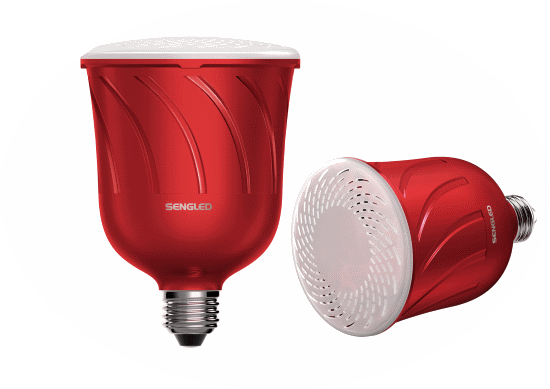BY ALEX RUAN, General Manager
Sengled USA.
www.sengled.com/
As the old saying goes, there’s nothing new under the sun. In an age marked by a seemingly endless stream of incredible inventions that overturn old ways of doing business, communicating and accessing news and entertainment, some might be tempted to dispute that notion. But if you take a closer look, there’s some truth to the saying because many of the inventions that have changed our lives are brilliant re-imaginings of existing products.
The smartphone is such an integral part of everyday life today that it’s difficult to imagine a world without it, yet Apple didn’t release the first generation of the ubiquitous iPhone until 2007. The iPhone completely changed the landscape of mobile communications with a simple concept: integrating valuable consumer electronics into a cellular telephone. This concept is now so thoroughly ingrained that we rarely take the time to think of it in this capacity.
Another example of a new twist on an existing product is the smart thermostat for the home, such as the Nest Learning Thermostat. A popular component of today’s smart homes, smart thermostats conserve energy by automatically adjusting temperature settings when homeowners come and go to avoid heating or cooling an empty house. Smart thermostats typically provide an app that allows users to control the temperature of their home remotely.
Although widespread adoption of self-driving cars is years away, new technologies are already making life easier for drivers by applying electronic components to an existing product. Many drivers dread parallel parking, but it’s a handy skill to have, especially in urban settings where parking spaces are hard to find. Today, some vehicles provide an automatic parking feature that incorporates cameras and sensors, making parallel parking much easier.
As engineers look for ways to incorporate consumer electronics into existing products, the savviest development teams are finding new ways to add value to products that already permeate everyday life. They are seeking electronic integration opportunities that expand the core product’s functionality – in ways that aren’t necessarily related to the reinvented product’s original purpose.
Apart from the wheel, the lightbulb is the archetypal invention – so much so that it serves as the symbol for a new idea, a stand-in for the “Eureka!” moment. The lightbulb has evolved considerably since Thomas Edison patented the first incandescent bulb in 1879. LED lightbulbs are a significant improvement over incandescent bulbs since they have a longer lifespan and are much more energy efficient.

Each intelligent bulb has a JBL multi-channel stereo wireless speaker hidden within. You screw the bulb into your existing lamp socket, pair with a Sengled Pulse Master bulb, and download and install the app onto your smart devices. You can now stream music and regulate the lighting.
The typical home has at least one lighting fixture per room, and often several. Engineers looking for new ways to incorporate consumer electronics into common household products have reinvented the lightbulb for the modern age, incorporating high-quality speakers with Bluetooth capabilities, Wi-Fi repeaters to extend connectivity throughout the home as well as integrated IP cameras, speakers and microphones.
Lightbulbs are an ideal conduit for these types of electronics since they are often mounted in overhead fixtures or raised lamps. The engineers who reinvented lighting are taking advantage of the fact that the placement meant to shed light throughout the room also works well for transmitting sound, capturing video or audio and extending connectivity.
The reinvented lightbulb, the self-parking car and the smartphone all have something in common: They are re-imaginings of existing products – reinvented wheels that make life better. It may be true that there’s nothing new under the sun. But that doesn’t mean there’s not a world of innovation left for engineers to explore.
Sengled, www.sengled.com
Advertisement





